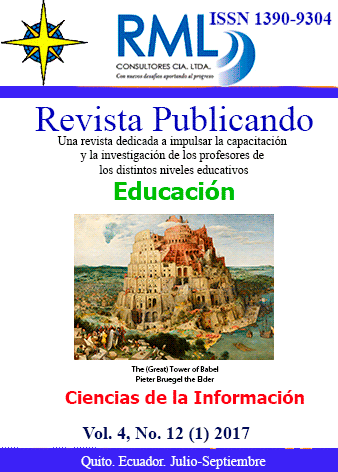Abstract
Integrating technology in the classroom has increased in the last few years. Previous studies on the interactive response system (IRS) have generally being in mind of instructors of languages to facilitate teaching and learning process. The purpose of the present study was therefore to explore the use of the online platform Kahoot! As a tool for teaching and learning vocabulary in an English Class. A quasi experimental design process was developed throughout a period of time to see how helpful this tool was in the learning vocabulary process in English Language classroom. The results support previous studies which found that using IRS improved learners”™ engagement and interaction. They also provide further evidence that the use of Kahoot! Increased motivation and improved acquisition of vocabulary for later exams. The results of the students”™ satisfaction survey indicated that students enjoyed playing Kahoot! And found it easy to use. It is necessary to use classroom technology in language classrooms to improve learning, and gamification is one of the latest approaches used in language classes. Kahoot! is a platform that can be used also for informal assessment.References
Abrams, S., & Walsh, S. (2014). Gamified Vocabulary. Journal Of Adolescent & Adult Literacy, 58(1), 49-58. http://dx.doi.org/10.1002/jaal.315
Byrne, R. (2013). Free technology for teachers: Kahoot! - create quizzes and surveys your students can answer on any device. Retrieved January 17, 2015, from http://www.freetech4teachers.com/2013/11/kahoot-create-quizzes-and-surveys-your.html#.VLnc78buzuU
Carrier, S. (2012). Elementary Preservice Teachers”™ Science Vocabulary: Knowledge and Application. Journal Of Science Teacher Education, 24(2), 405-425. http://dx.doi.org/10.1007/s10972-012-9270-7
Chuan, Y. T. (2015). SSCLS; Smartphone-Supported Collaborative Learning System. Telematics and Informatics, 32, 463-474.
Cross, J. (2014). Introduction to Kahoot for your classroom assessments. Retrieved January 31, 2015, from https://www.youtube.com/watch?v=PYfoRRtLXys
Dellos, R. (2015). Kahoot! A Digital Game resource for learning. International Journal Of Instructional Technology And Distance Learning, Vol 12(No. 4), 49-52.
Graham, K. (2015). TechMatters: Getting into Kahoot!(s): Exploring a game-based learning system to enhance student learning. LOEX Quarterly, 42(3), 4.
Heslip, G., Donovan, P., & Cullen, J. G. (2013). Student response systems and learner engagement in large classes. Active Learning in Higher Education. 15, 11-24.
Kahoot! Game-based blended learning & classroom response system. (2014). Retrieved January 17, 2015, from https://getkahoot.com
Kahoot! Journal. (2017). Kahoot! Journal. Retrieved 24 August 2017, from http://blog.getkahoot.com
Kinahan, C. (2001). Book Review: Vocabulary in language teaching (Cambridge Language Education series). Language Teaching Research, 5(2), 180-182. http://dx.doi.org/10.1177/136216880100500206
Liu, T. C., Chu, C. C., Lin, Y. C., Wang, Y., & Chu C. C. (2006). A preliminary study on integrating IRS with lectures of fundamental physics in the first year university courses. The fourth international conference on multimedia and information and communication technologies in education, Sevilla, Spain, Novemver 22-25.
Malamed, C. (2012). Book Review: 'The Gamification of Learning and Instruction: Game-Based Methods and Strategies For Training And Education' by Karl Kapp. Elearn, 2012(5), 3. http://dx.doi.org/10.1145/2207270.2211316
Mayer, E. A., Stull, A., DeLeeuw, K., Almeroth, K., Bimber, B., & Chun, D. (2009). Clickers in College classrooms: fostering learning with questioning methods. Contemporary Educational Psychology, 34 51-57.
McDounough, K., & Foote, J. A. (2015). The impact of individual and Shared clicker use on students' collaborative learning. Computers & Education, 86, 236-249.
Plump, C., & LaRosa, J. (2017). Using Kahoot! in the Classroom to Create Engagement and Active Learning: A Game-Based Technology Solution for eLearning Novices. Management Teaching Review, 2(2), 151-158. http://dx.doi.org/10.1177/2379298116689783
Schmitt, N. (2008). Review article: Instructed second language vocabulary learning. Language Teaching Research, 12(3), 329-363. http://dx.doi.org/10.1177/1362168808089921
Thomas, C. (2014). Kahoot! Retrieved January 17, 2015, from https://www.graphite.org/website/kahoot
Wang, Y. (2017). The effectiveness of integrating teaching strategies into IRS activities to facilitate learning. Journal Of Computer Assisted Learning, 33(1), 35-50. http://dx.doi.org/10.1111/jcal.12164
Yip, F., & Kwan, A. (2006). Online vocabulary games as a tool for teaching and learning English vocabulary. Educational Media International, 43(3), 233-249. http://dx.doi.org/10.1080/09523980600641445
You are free to:
Share — copy and redistribute the material in any medium or format.
Adapt — remix, transform, and build upon the material.
The licensor cannot revoke these freedoms as long as you follow the license terms.
Under the following terms:
Attribution — You must give appropriate credit, provide a link to the license, and indicate if changes were made. You may do so in any reasonable manner, but not in any way that suggests the licensor endorses you or your use.
NonCommercial — You may not use the material for commercial purposes.
ShareAlike — If you remix, transform, or build upon the material, you must distribute your contributions under the same license as the original.
No additional restrictions — You may not apply legal terms or technological measures that legally restrict others from doing anything the license permits.
